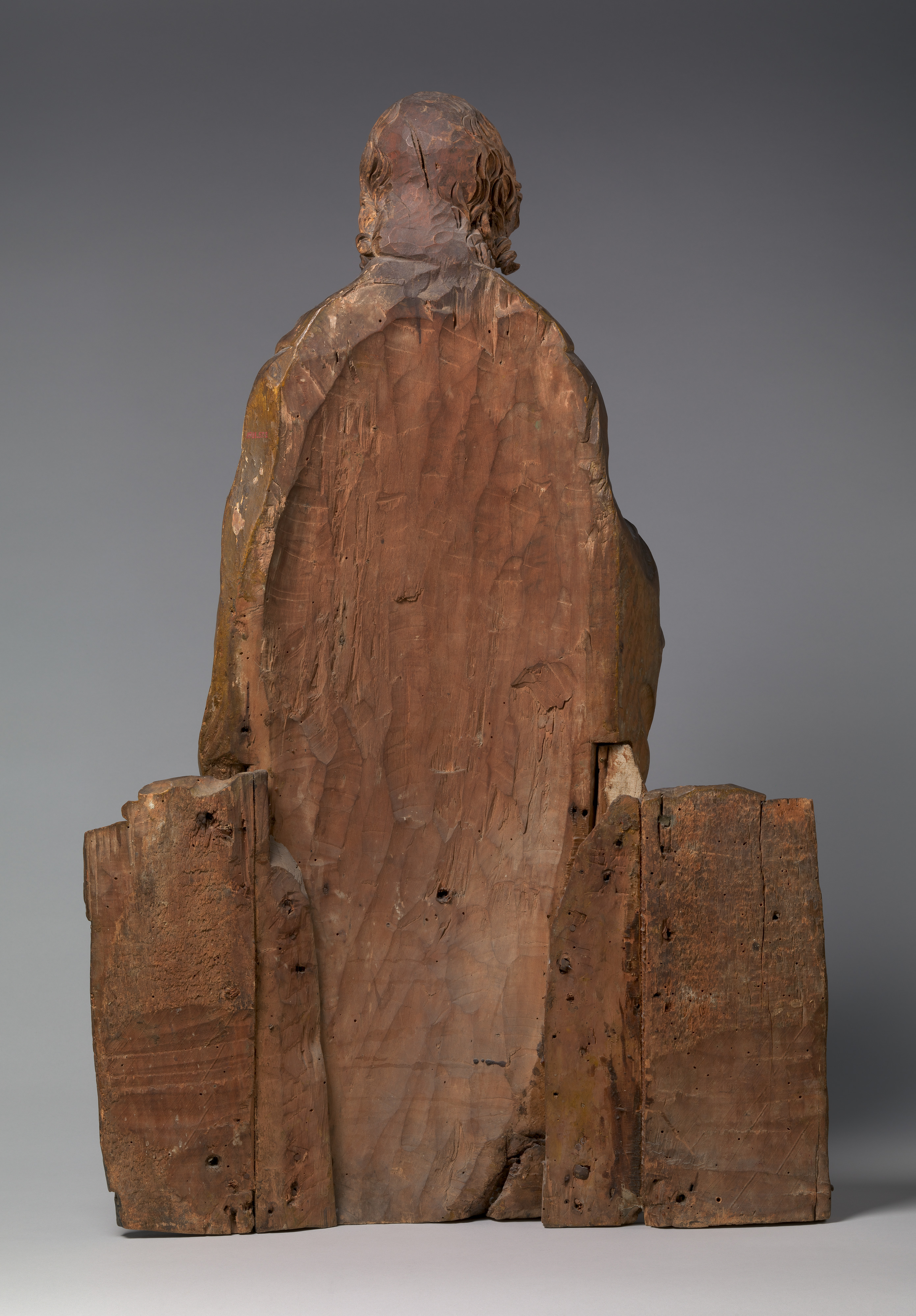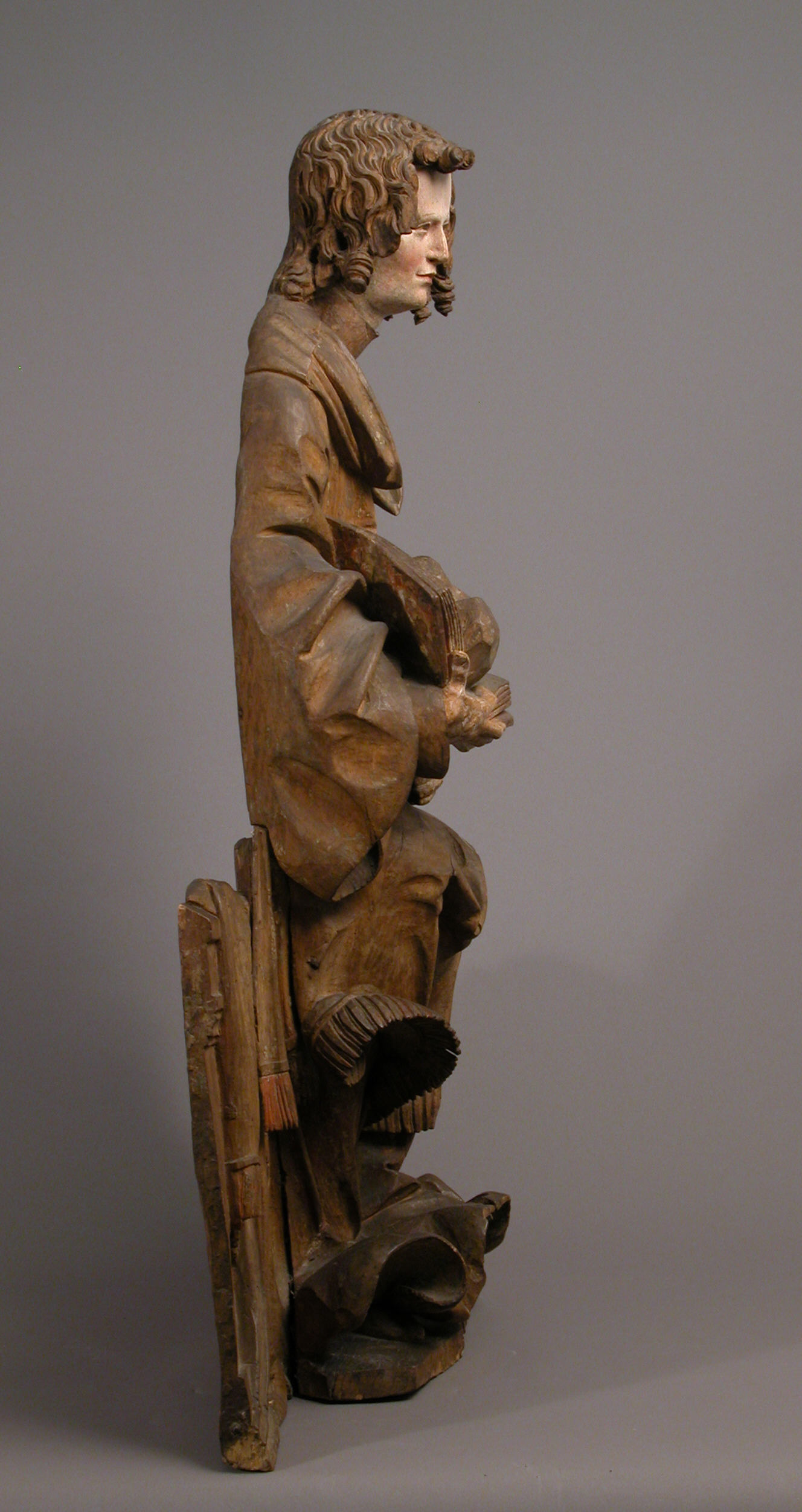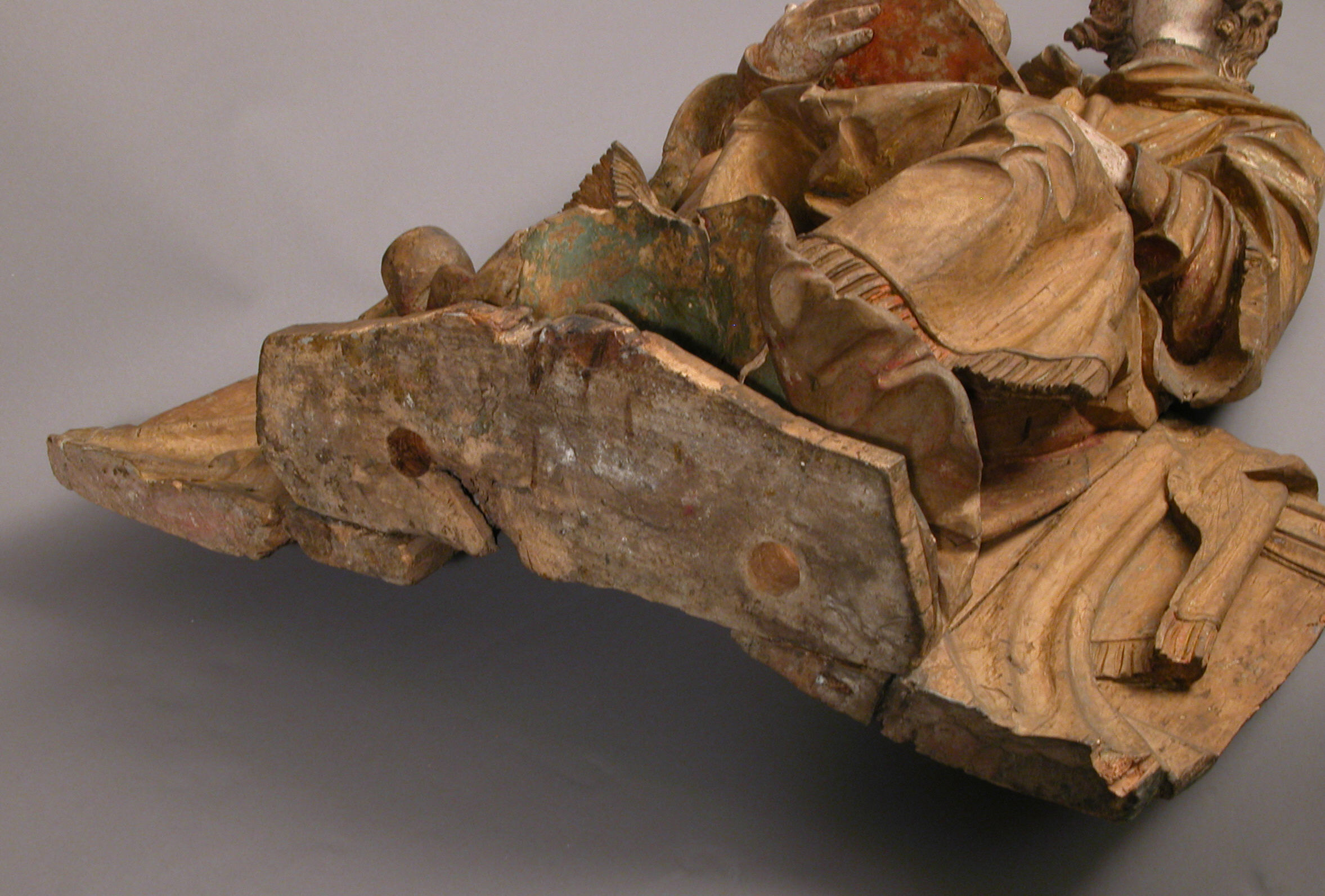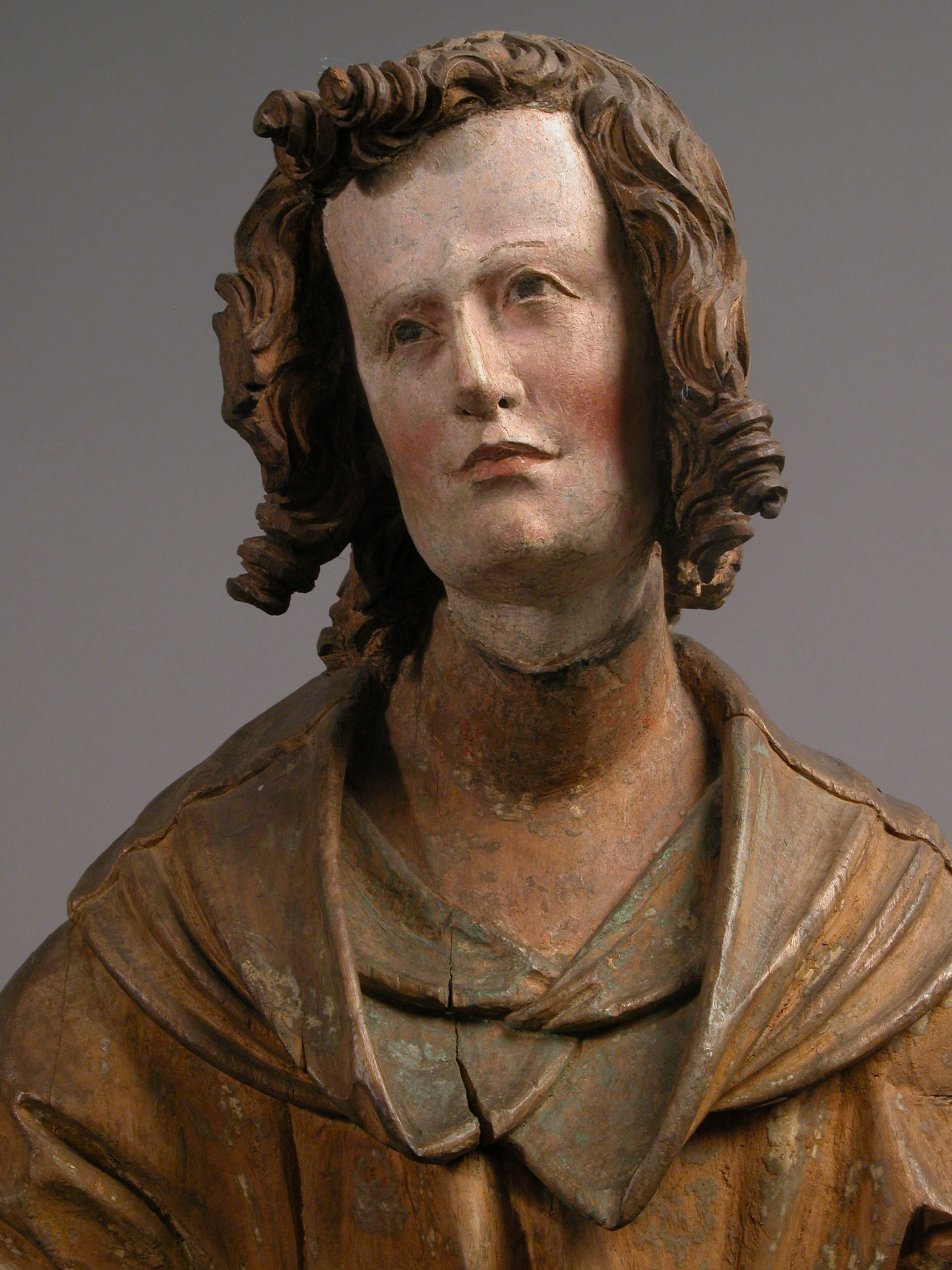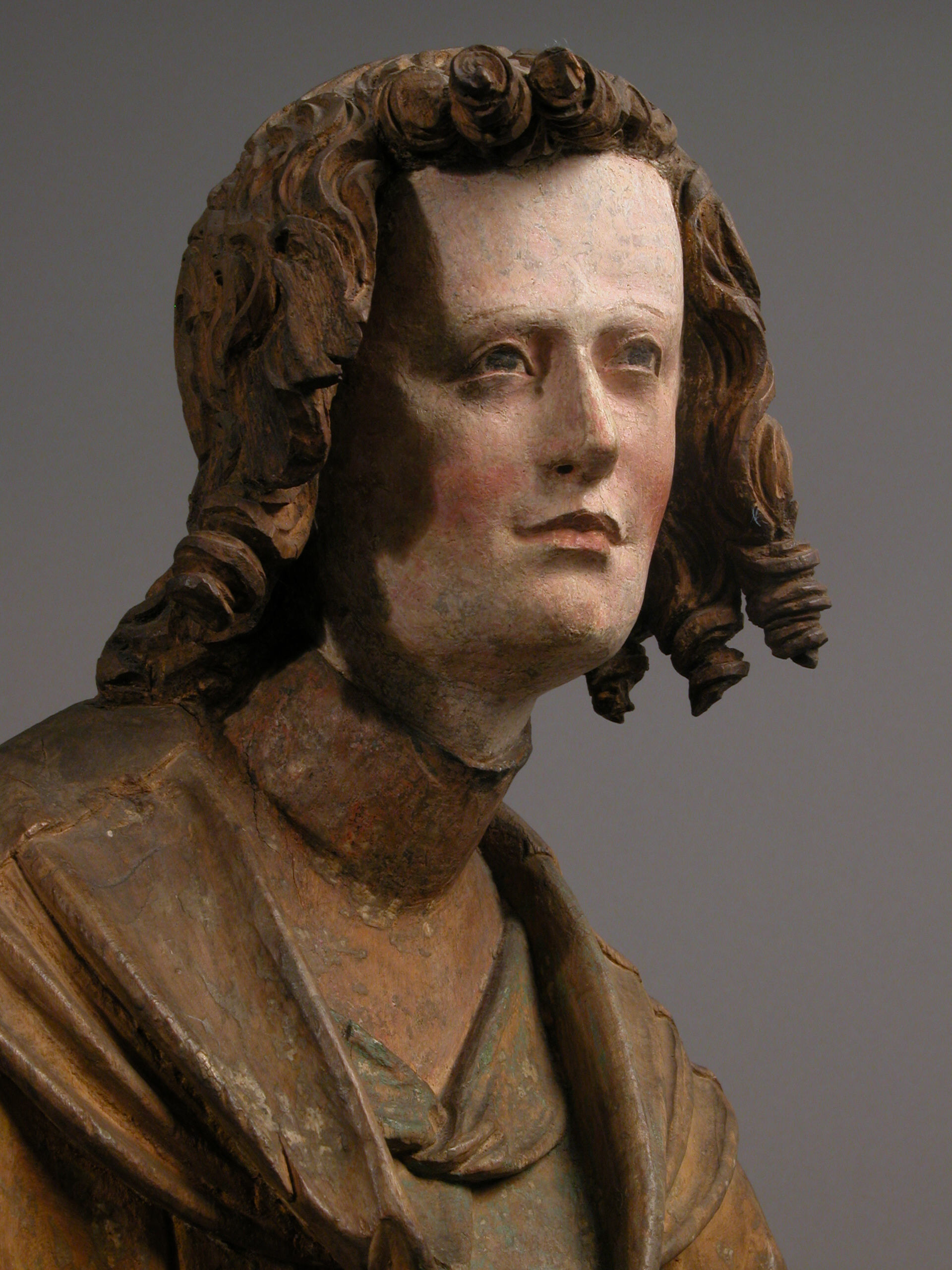Saint Stephen
Hans Leinberger German
Saint Stephen sits upon a low, partially draped, backless bench. He wears a dalmatic over a long tunic, indicating his position in the church as a deacon, and in his right hand he holds an open book supporting three rocks, referring to his death by stoning. Revered as the first Christian martyr, Stephen's story is recounted in the Acts of the Apostles (6-7).
The work is carved from three pieces of wood: one was used for the saint and the other two for the lateral extensions of the seat. The modeling is so convincing that when viewed from the front, the figure, in fact a sculpture in relief, appears to be rendered fully in the round. The statue is well preserved except for the loss of much of the original polychromy. The relief probably was once part of a series of seated figures of saints that may have included Saint Lawrence, another deacon saint often depicted together with Saint Stephen in Late Gothic art.
Attributed to one of the foremost Late Gothic sculptors of Lower Bavaria, Hans Leinberger of Landshut, this portrayal of Saint Stephen represented an especially welcome addition to the Museum's collection of German sculpture of the period. It is the only example of Leinberger's work in the collection, and it is particularly notable for the animated execution of drapery, with its deeply scalloped recesses, the doughlike thickening of the outer ridges, broken connecting folds, and inexplicably swirling edges.
Due to rights restrictions, this image cannot be enlarged, viewed at full screen, or downloaded.
This artwork is meant to be viewed from right to left. Scroll left to view more.


